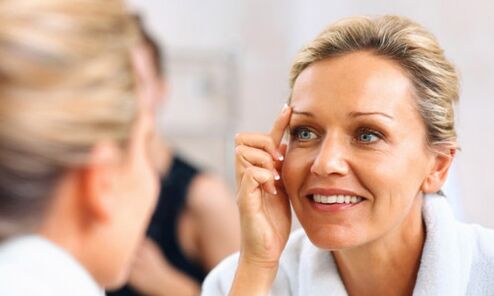
The first thing that comes to mind when it comes to facelift is plastic surgery. However, not everyone wants and can expose themselves to radical influences. A possible compromise in this case is numerous minimally and non-invasive rejuvenation techniques.
Non-surgical facelift– This is a whole range of different procedures that can improve the condition of the skin, eliminate sagging tissue and give clarity to the oval without the need for surgical intervention and the difficulties associated with it.
The main advantages of such techniques compared to surgery are relatively low cost, low trauma and fewer contraindications. At the same time, with their help it is not always possible to achieve such an impressive result as after surgery, nor does it last so long, usually up to 2-3 years, which partially negates the cost advantage.
Basic methods of non-surgical lifting
All non-surgical facelift procedures can be divided into several large groups:
- Injectable– subcutaneous administration of drugs that help improve skin tone and general rejuvenation. This particularly includes some forms of mesotherapy, contouring and plasma lifting
- Hardware– are carried out on devices that use different types of energy (laser, radio wave, microcurrent, etc. ) to act on the skin.
- Lifting with threads– Installation of special biocompatible threads under the skin that help move tissues to a new position. Most types of thread lifts are surgical techniques, but their invasiveness and the number of contraindications are significantly lower than other anti-aging facial surgeries
- Deep peelsThe upper layers of the dermis are removed. Stimulate skin renewal and thus create a lifting effect
- Manual practices– various massage techniques aimed at improving the tone of facial muscle structures and activating metabolism.
Injection lifting and facial rejuvenation
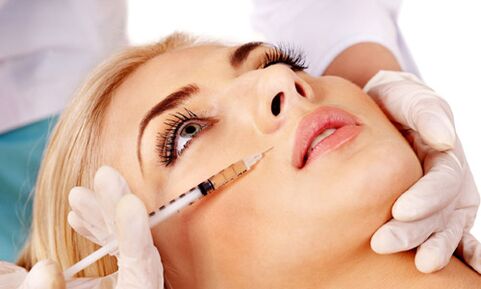
One of the safest and most common methods of this group isMesolifting– a variant of mesotherapy with a specially selected complex of active moisturizing and strengthening substances, which activates the process of cell renewal, fills them with moisture and promotes local blood circulation. The standard course consists of 3-5 procedures, the duration of results is 6 to 18 months. After mesolifting, aging and sagging skin is noticeably smoothed, looks fresh and young, deep static wrinkles are reduced and small facial wrinkles disappear, the skin is renewed at the cellular level, its color is evened out, turgor and elasticity improve.
Plasma liftingorPRP therapyis an injection of the patient's own blood (or plasma that has undergone special pretreatment). The course includes 4-5 sessions, the results last about 1 year. Plasmolifting acts both locally and at the cellular level of the skin, triggers the synthesis of collagen fibers and has a rejuvenating effect on the entire body - it stimulates the immune system, triggers regeneration and cell renewal processes. In addition, plasma, like a biological glue, bonds the facial skin to the underlying structures, eliminating age-related tissue ptosis. After completing the treatment, the skin smoothes, becomes more elastic and firmer, fine wrinkles disappear and deep wrinkles diminish.
If meso and plasmolifting have a complex effect on the entire face, tightening and rejuvenating it, thenContour plastic surgery with fillersAndBotulinum therapyDesigned to specifically address specific age-related concerns.
- Filler injections are intended to fill deep wrinkles, replenish the volume of missing tissue and correct the shape of the face. Today, a wide range of products based primarily on high-density hyaluronic acid are available to beauticians and are designed to correct certain age-related facial defects.
- Botulinum therapy uses medications based on botulinum toxin type A, which blocks the nerve endings in the injection area and prevents the facial muscles from contracting. This smoothes the skin and even deep facial wrinkles are reduced or disappear completely.
The effect of contouring and botulinum therapy lasts about 8-12 months, depending on the activity of metabolic processes and other individual characteristics of the body.
Methods for tightening hardware
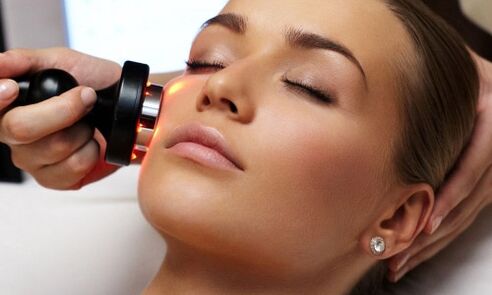
How most methods workLifting hardwarethe same thing - the subcutaneous tissue is heated through targeted action, which stimulates the compaction of existing collagen fibers and the production of new collagen and elastin. This smoothes wrinkles, narrows pores and makes the skin firm and elastic. The main differences between such procedures are what type of energy is used (lasers, radio waves, etc. ). Otherwise they are very similar: they are carried out in courses of 3 to 5 sessions and the duration of the result is about 2 years. Today the most popular methods are:
- Laser thermal lifting– Laser energy is used;
- ELOS lifting– based on the influence of two types of energy at once – laser and light;
- Radiofrequency (RF) lifting– Low power, high frequency radio waves are used.
Other option -Microcurrent therapy, – works a little differently. The skin cells are stimulated by microcurrents and specially developed biological preparations with powerful antioxidants that activate the natural mechanisms of skin regeneration.
The standard course of such a non-surgical lifting consists of 4-5 procedures performed once a week. The main advantages of this method include a minimal number of contraindications and complete harmlessness to the body. Microcurrents activate metabolism, normalize the chemical composition of cells and increase tissue elasticity - for this reason they are often used as a restorative procedure after surgical interventions.
Lifting with threads
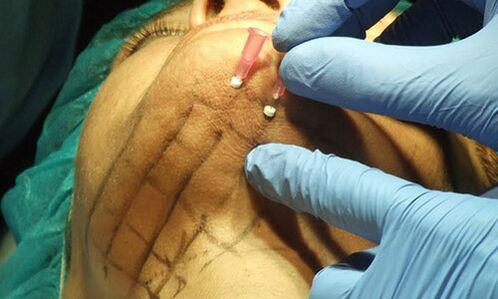
This is a minimally invasive technique in which thin threads are inserted under the skin. They are then pulled up, moved behind you and the soft tissues are fixed in the desired position. The procedure is quick and safe, but still quite serious. Therefore, it should be performed not by a beautician who works on the "external part" of the face, but by a plastic surgeon who is well acquainted with the internal structure of the face. Depending on the general indications and personal preferences of the patient, the following may be possibleare used:
- Non-absorbable threads, made from biocompatible materials such as polypropylene.
- Mesothreads- are considered slightly less effective, but consist of polylactic acid, which does not remain under the skin but is completely absorbed after a few months. In addition to the actual tightening, they have a positive effect on the general condition and health of the skin (similar to mesotherapy, hence the prefix "Meso" in the name)
The result achieved lasts on average 2-3 years. After that, you can install additional threads or choose a different technique (already installed threads do not interfere with cosmetic procedures or surgical lifting). Some of the non-absorbable threads can be "tightened" in the future, but there is no consensus among experts about the advisability of such manipulation.
Deep peels
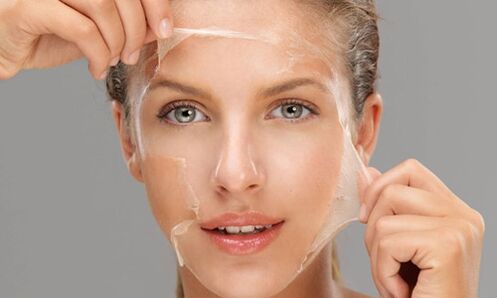
These are quite traumatic and painful, but at the same time very effective procedures, with the help of which you can promote the regeneration processes of the skin, improve its color, smoothness and elasticity, and also eliminate many external defects (hyperkeratosis, hyperpigmentation, etc. ).
- Whiledeep chemical peelingAcidic phenol-based compositions are applied to the face, destroying the upper layers of the skin up to the middle of the reticulated layer of the dermis. The procedure is only carried out in a clinical environment under general anesthesia - as a full operation.
- Deep resurfacing with lasercombines two processes: the application of thermal microtrauma to the skin, which triggers internal recovery mechanisms in it, and the evaporation (evaporation) of old cells. Modern fractional ablative lasers perform these two actions simultaneously, allowing you to achieve a more pronounced lifting effect in fewer sessions than previous generations of lasers.
The recovery period after deep peels is quite long (rehabilitation lasts up to 2 weeks). The effect lasts about 1 year. If we compare both procedures, laser resurfacing has an important advantage - the ability to adjust the strength and depth of the impact "on the fly". This allows you to achieve optimal results for each area, even for very sensitive areas (eyelids, lips, neck). Select parameters that cannot be achieved with a chemical peel. In addition, the cooling system makes the procedure less painful and allows the use of local anesthesia.
Massage as a method of non-surgical facelift
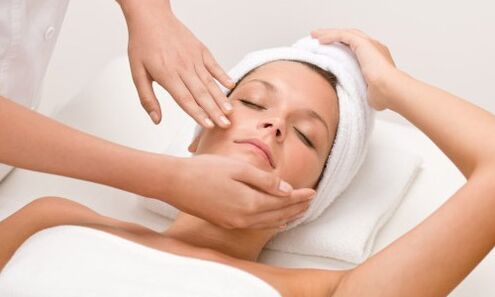
It is also possible to achieve a certain lifting effect with the help of manual influence, although there are very different opinions among experts about its severity and duration. The most popular procedure from this group isSculptural facial massage(plasticizing massage, Joelle Siocco facial massage and other proprietary techniques).
The active principle is based on deep strength training of the facial and non-facial muscles while activating lymphatic drainage. The masseur "shapes" the contours of the face and corrects problem areas. As a result, the oval becomes clearer, the manifestations of age-related changes are reduced, muscle tension is relieved, and skin color improves.
The standard course includes 10-12 sessions, conducted every 2-3 days. Further maintenance is required two to three times a month, which is a relative disadvantage of this method of non-surgical lifting. The obvious advantages of sculptural massage are painlessness, complete safety, no rehabilitation time, no risk of complications, no irritation to the skin. The obvious disadvantage is that the results are significantly less pronounced compared to other methods described above.
How to Choose the Best Non-Surgical Facelift Technique?
In order to smooth and possibly completely eliminate the signs of skin aging, it is necessary to identify the causes of their occurrence. This unique diagnosis is one of the main tasks of a cosmetologist or plastic surgeon. He should be entrusted with the choice of a specific rejuvenation method or their combination. When it comes to a face, the question is usually:How "deep" are age-related changes localized?
- If they mainly affect the skin - e. g. B. We are talking about small wrinkles, changes in relief, reduced turgor - methods that affect the skin layer are preferred (restoration, compaction, strengthening of the elastin-collagen framework, polishing of existing defects). Peels, thermolifting, plasma therapy and mesolifting are used for this purpose.
- If there are problems with the subcutaneous structures of the face (deep wrinkles, pronounced nasolacrimal furrows, cheeks, bags under the eyes, loss of clarity of the oval of the face, double chin), choose methods that affect the muscles and subcutaneous tissue. These include thread lifting, botulinum therapy, contouring, microcurrent and sculptural massage.
- In many cases, changes affect both the skin and internal structures. To achieve a pronounced effect, a thoughtful combination of several rejuvenation techniques is required.
Expert opinion
Journalists asked leading cosmetologists to comment on the effectiveness of certain non-surgical facelift options, and also turned to plastic surgeons for a professional opinion:
"The question is much simpler than it seems. In order not to make a mistake when choosing the technique, not to have an operation earlier than necessary, but also not to spend longer in the cosmetic practice than expected, you only need to clarify three things:
- Condition of soft tissues, degree of ptosis.If the age-related changes are not too advanced, we can talk about non-surgical solutions. When it comes to pronounced wrinkles and a fairly large excess of skin, do not waste time and money on cosmetics and do not commit self-deception. Excess skin does not disappear on its own, it can only be removed with a scalpel and only a plastic surgeon will help you here.
- Age. Until age 40 (most common), cosmetic procedures work quite well. After 40 years, their effect becomes less and less noticeable, and after 50 you should seriously think about surgery if you need a real effect, and not just care.
- Patient's wishes.Only you decide who you turn to and what you need. Not all women want to look 10-20 years younger; For many it is important to simply look well-groomed and fresh according to their age. This problem can be solved without surgery. Dull complexion, sagging skin, fine wrinkles, age spots, etc. - beauticians cope well with all these problems. However, if you are not satisfied with sagging facial contours, drooping eyelids, cheeks, bags under the eyes, double chin or wrinkles on the neck, only consult a surgeon.
If you need a very small lift, pay attention to vector lifting with various threads or contour plastic. By repeating these procedures once or twice a year, you can postpone surgery for several years. You yourself will understand when you no longer like the resulting effect and it is time to think about more radical methods. "
"Non-surgical methods, of course, will not replace plastic surgery, but they are a good means of prevention and can delay a visit to the surgeon for a long time. From the age of 25, it may be advisable for women to resort to gentle lifting (hardware cosmetology). Almost any of the methods listed in the article can help with certain subtle age-related changes. Our specialists use some of these procedures individually, but usually as part of a comprehensive program.
Stagnation can occur after a surgical facelift, which can be easily treated with the help of microcurrents. Contour plastics with fillers can correct minor age-related changes, but in this case plasma fillers (analogs of hyaluronic acid fillers made from the patient's own blood) have proven to be better.
Botulinum toxin A preparations, of course, give good results and it is impossible to replace them with analogues. RF lifting also has a good effect in both the prevention of aging and maintenance therapy after plastic surgery. However, due to its traumatic nature, phenol peeling is not used in our clinic.
A significant advantage of non-surgical lifting procedures is that they can be recommended to patients at a relatively young age with minor age-related changes. For example, a gentle alternative to blepharoplasty can be plasma, laser or RF lifting, as well as mesothreads - what exactly to choose depends on the "severity" of the skin, the depth of wrinkles, the patient's age and the presence of certain contraindications. "
"I would like to immediately point out that, of course, none of the minimally invasive techniques can compete with surgical interventions in terms of their effectiveness. However, it often happens that the patient's state of health does not allow such a step or the specific situation does not yet require surgical intervention. In these cases, minimally invasive cosmetics can help us.
Thread lifting, laser facelift and RF lifting techniques may well delay the need for surgery and serve as a kind of temporary replacement for surgical facelift techniques. Wrinkles can be eliminated through botulinum therapy and fillers. Plasmolifting improves skin turgor and its general condition. Peels are also responsible for the turgor, color and quality of the skin. These procedures are effective in their scope, but do not represent a direct alternative to plastic surgery.
The clinic carries out almost all of the procedures described in the article, however, for each of them there are both indications and contraindications. In particular, for patients who come to us for a complete facelift, I recommend plasma lifting before and after the operation, so we can shorten the rehabilitation time. But it is not worth carrying out any hardware rejuvenation procedures before the operation. "
"Currently there are a large number of effective methods of non-surgical facial rejuvenation, but it is important to understand the difference in the skills of a plastic surgeon and a cosmetologist. The surgeon creates the facial contour, the beautician improves the skin quality. And aging is manifested by sagging skin and muscles, a decrease in skin tone and a deterioration in its quality. In total, there are about five types of aging, depending on its manifestation, and a rejuvenation program is being developed, which also includes the use of non-surgical techniques.
Today I consider hardware procedures (fractional laser photothermolysis, laser thermal lifting), RF lifting, as well as contour plastic and thread lifting to be the most effective. But it must be honestly said that with severe ptosis and a lot of subcutaneous fat, all types of hardware lifting are ineffective, as they affect the deep layers of the skin without attacking its surface. The so-called 3D facial modeling is also very popular and effective, in which a number of measures are used: contouring, thread lifting, botulinum therapy.
In general, we have a fairly large selection of minimally invasive facelift methods, but an integrated approach is always required for optimal results. A single method, no matter how good it may be, cannot solve all problems. "


























